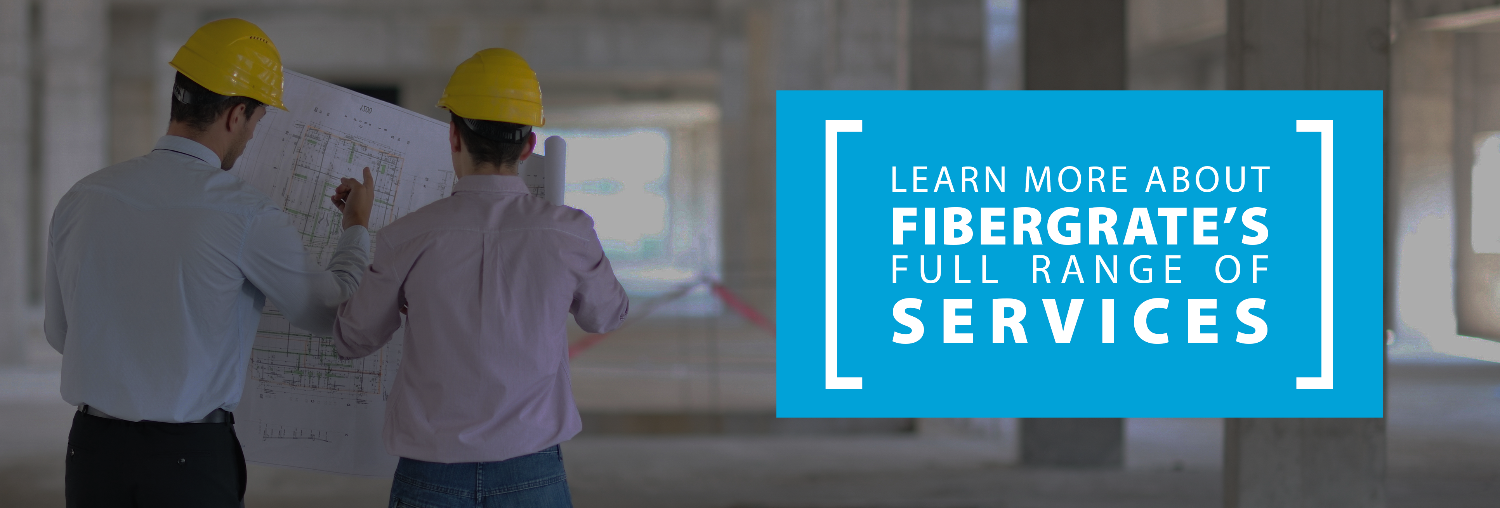When it comes to fencing solutions, durability, versatility, and cost-effectiveness are key factors...
Top Use Cases for FRP Fencing in Commercial Applications
When it comes to fencing solutions, durability, versatility, and cost-effectiveness are key factors to consider. That is where FRP fencing becomes a serious contender. Fiberglass reinforced plastic (FRP) fencing offers a range of benefits that make it an ideal choice for various outdoor and indoor applications.
Types of FRP Fencing
FRP fencing comes in various forms, each designed to suit different needs and environments:
- Molded and Pultruded Grating: FRP gratings are lightweight yet incredibly strong, making them an excellent option for applications where weight is a concern. For example, they are easy to build into elevated structures such as walkways and platforms. Both molded and pultruded gratings are durable and resistant to corrosion, making them suitable for harsh environments.
- Posts and Railings: Fibergrate’s Dynarail/DynaRound lineup offers a range of FRP posts and railings that can be used to craft a sturdy and low-maintenance fencing solution. These products are available in various sizes and configurations to suit different aesthetic and functional requirements. They are also designed to help aid in OSHA compliance.
- Custom Fencing: For projects that require a bespoke solution, custom FRP fencing is the answer. Whether it is a unique design or specific dimensions, FRP Dynashape products can be tailored to meet your exact specifications, ensuring a perfect fit for your application.

Fiberglass reinforced plastic fence structural shapes
Benefits of FRP for Outdoor Uses
FRP fencing offers several advantages over traditional materials such as wood, metal, or concrete. The following properties of high-quality FRP make it an excellent choice for outdoor applications.
Weather Resistance: FRP is resistant to corrosion and extreme weather conditions, providing long-term durability even in harsh environments. Added UV protection can be applied to some FRP products for outdoor use cases for an extra level of resistance to degradation from sun exposure.
Low Maintenance: Unlike wood or metal fencing, FRP requires minimal maintenance, saving both time and money over its lifespan.
Lightweight yet Strong: FRP is lightweight compared to traditional materials, making it easier to transport, handle, and install. However, it does not compromise on strength, offering robust protection where needed.
Chemical Resistance: FRP is resistant to a wide range of chemicals, making it suitable for use in industrial environments where exposure to corrosive substances is a concern. It also resists corrosion from salt water.
FRP Fencing Applications
Construction Sites: Lightweight yet sturdy FRP barriers enhance safety at construction sites, providing a protective barrier for workers and equipment.
Agricultural Fencing: FRP fencing offers a weather-resistant and long-lasting solution for farms, withstanding exposure to moisture, chemicals, and wood-boring pests.
Industrial Facilities: FRP's durability and easy installation make it an optimal choice for perimeter security in industrial settings.
Data Centers: Electrically non-conductive FRP fencing ensures safety around sensitive equipment, reducing the risk of electrical hazards.
Utility Enclosures and Infrastructure: FRP enclosures are common commercial applications for FRP fencing materials in utility, industrial, and manufacturing facilities, providing durable and corrosion-resistant housing for utility equipment.
FRP fencing is also suitable for parks and recreational areas, sports facilities, and public infrastructure projects, offering benefits such as minimal maintenance, impact resistance, and longevity.
FRP Fence Cost Summary
Depending on the fluctuating price of commodities such as steel or aluminum, the initial investment in FRP fencing may be higher than traditional materials. However, the long-term savings are substantial. By considering the total cost of ownership, including transportation, installation, maintenance, and replacement costs, FRP often proves to be the more cost-effective option. Compared to traditional materials, FRP fencing offers superior durability and longevity, resulting in significant savings over its lifespan.
Conclusion
FRP fencing offers a versatile and durable solution for a wide range of outdoor applications. Its unique properties make it an ideal choice for construction sites, agricultural fencing, industrial facilities, and public spaces. With its low maintenance requirements, weather resistance, and cost-effectiveness, FRP fencing is poised to play a significant role in the future of the fencing industry.
Consider FRP fencing for your next outdoor project and experience the benefits firsthand.


